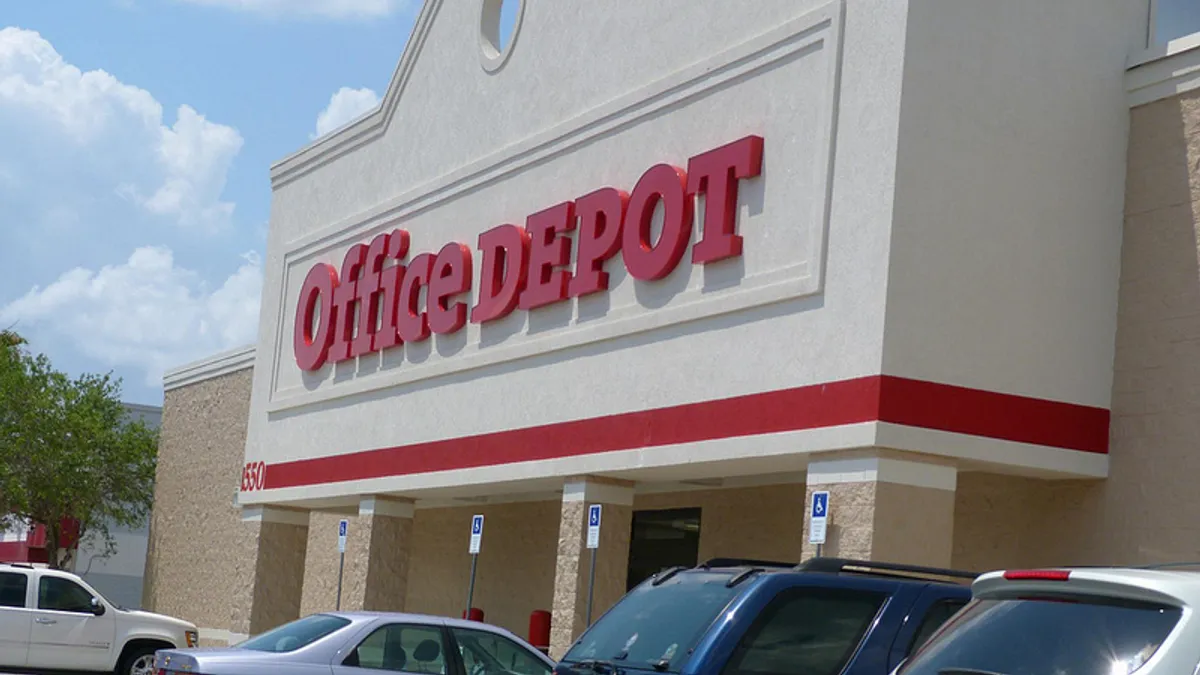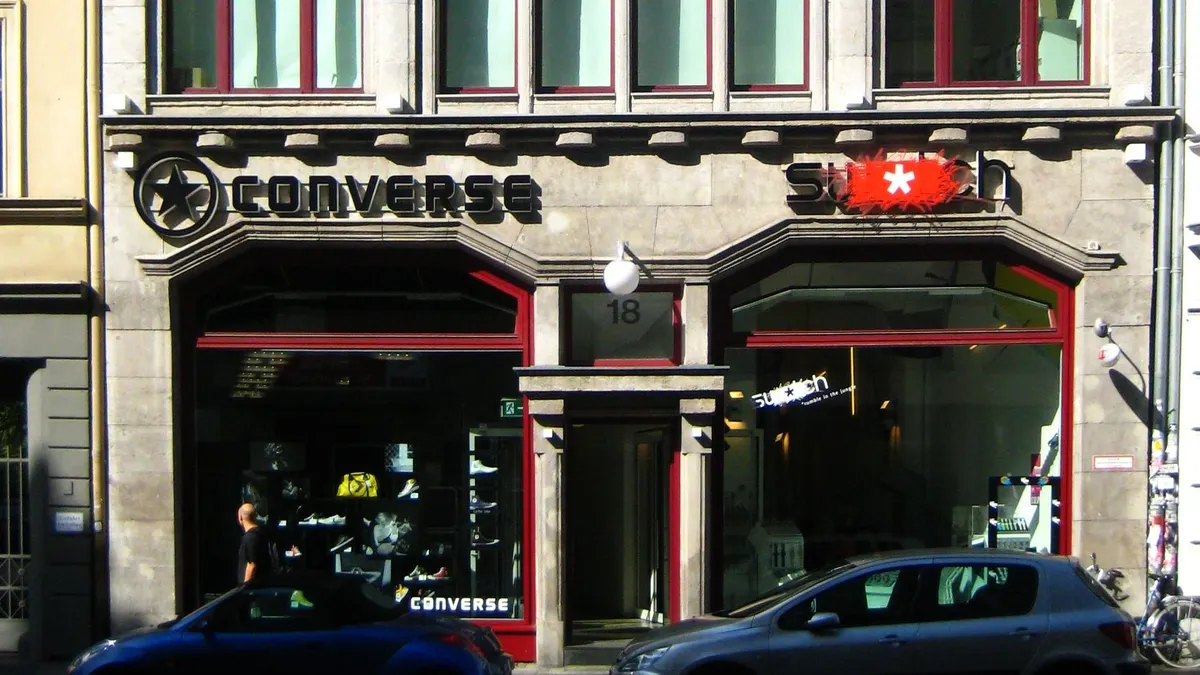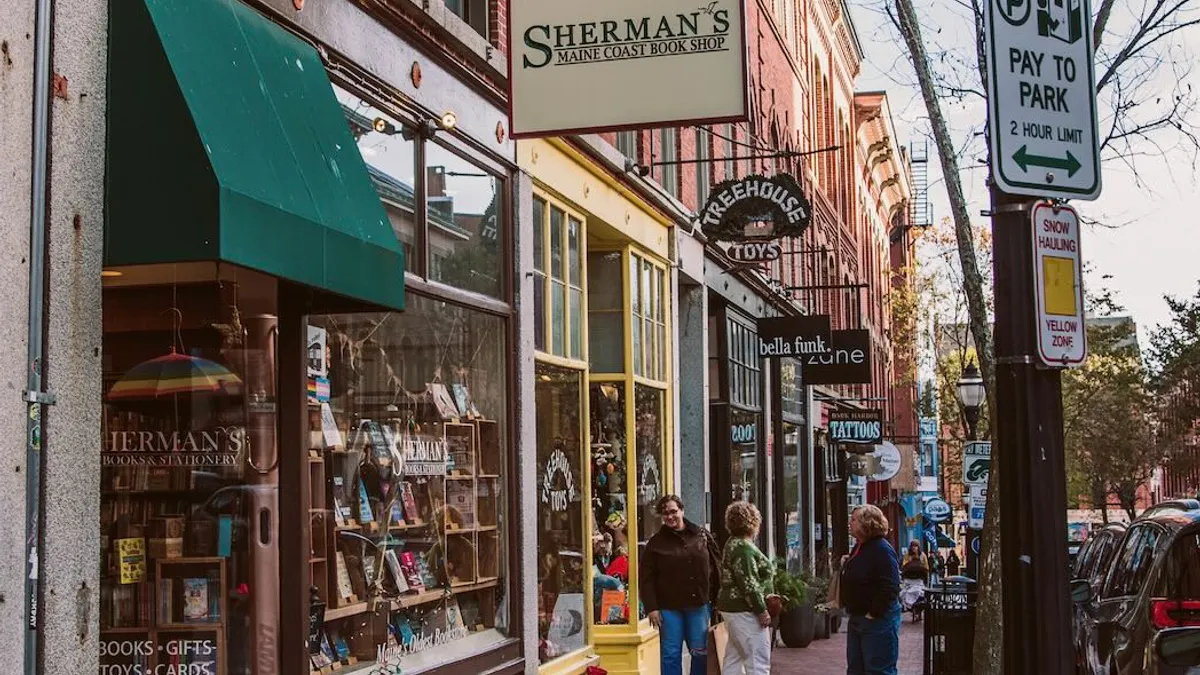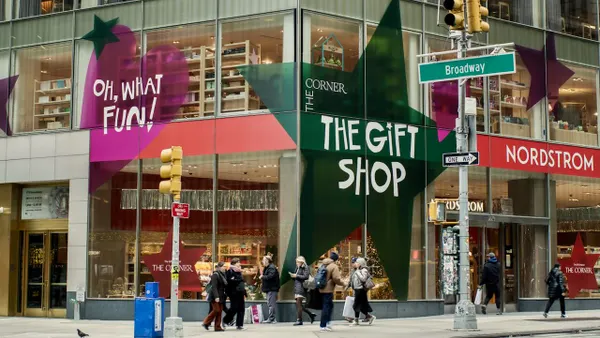More than a year after Staples announced it would acquire rival Office Depot for $6.3 billion, the deal effectively ended in mid-May, when U.S. District Court Judge Emmet Sullivan granted the Federal Trade Commission's (FTC) request for an injunction over concerns the combined company would wield too much power and influence in the business contracts space, impeding competition.
The merger would have created an international office supply juggernaut that would have relied on its impressive brick-and-mortar presence to neutralize the growing threat posed by online competition. Now Staples and Office Depot are once again rivals, each scrambling to figure out what comes next.
Both retailers have offered some early clues. Office Depot CEO Roland Smith declared the company’s future will depend on “bold new action" and said it’s considering selling some of its European operations, increasing markets like break room and cleaning supplies, and possibly making its own acquisitions. Office Depot also said it has hired management consulting firm Bain & Co. to conduct a strategic review.
Staples, meanwhile, said it will work to dominate in core office supply categories like ink, toner and paper, and possibly divest its European operations while exploring other acquisitions.
But while Office Depot and Staples may be the only retailers selling "office basics" in one place, the competition from other segments of retail has increased dramatically, and given the commodity nature of their merchandise, it's not clear how much wiggle room they have moving forward.
There’s really “no other place besides Office Depot and Staples to get everything you need for your office," said Scott Wagner, a partner at law firm Bilzin Sumberg and an antitrust expert. "But everything you can get there, you can get somewhere else.”
Competition is everywhere
Department stores and mass merchandisers like Target and Wal-Mart have increasingly realized that to attract today’s fickle shoppers to stores, the brick-and-mortar experience must improve: Transactions must be smooth as silk, and merchandise must be appealing and somewhat unique. But the core merchandise at Staples and Office Depot makes creating exciting experiences in stores difficult, says Tom Martell, director of store analytics firm RetailNext’s business analytics/data insights team.
Even much of the commodity merchandise sold at Target and Wal-Mart, like cleaning supplies and baby goods, still offers room for differentiation. But office supplies are particularly difficult to play around with, aside from some differences in “green” products and design, and for the most part, machines and ink and toner are going to be available anywhere office supplies are sold.
“You can go to Wal-Mart, you can go to Target,” for many of the things Staples and Office Depot sell, Wagner said, adding that consumers may also visit furniture stores for other products and even drugstores for a few items.
To that end, Staples director of corporate communications Mark Cautela said that the retailer is increasing its offering of products and services.
"We will continue to build on our assortment of products beyond office supplies," Cautela told Retail Dive in an email. "We’ll also look to build on our omnichannel capabilities, like buy online pick-up in store and shipping from store... and investing in sharper pricing and enhanced supply-chain capabilities." (Office Depot, for its part, told Retail Dive in an email that it will have more to share on its future after "after the completion of the comprehensive strategic review we are conducting with the assistance of Bain," according to a spokesperson.)
RetailNext's Martell told Retail Dive that the big office supply retailers already do well when it comes to in-store customer service. “We do a lot of floor plan adjustments to try to build the most inviting environment, and it’s challenging in any superstore environment like these office supply retailers to create a homey feel," he said. “Simply put, it’s human-to-human service interaction. That’s what we used to do in retail. So moving forward involves looking back a little bit.”
But that may not be enough to bring customers back to Staples and Office Depot. The latter's Q1 2016 sales dropped 9% and same-store sales declined 1%, primarily due to lower transactions, according to its first quarterly report. Meanwhile, in the comparable period, Staples' same-store sales fell 4%, reflecting a 2% decline in average order size and a 2% decline in traffic over the prior year.
“Traffic is the single biggest issue these chains face,” Keith Anderson, vice president of strategy and insights at retail intelligence firm Profitero, told Retail Dive. “There is no in-store experience good enough to overcome steadily declining store visits.”
The online threat
While Staples and Office Depot argued that their combined business would still be challenged by upstarts in the space, including online commerce giant Amazon, Judge Sullivan didn't buy it. Sullivan agreed with the FTC’s argument that Amazon’s nascent entry into the business supplies market isn't enough to guarantee sufficient competition: Although Amazon is well known as a powerful disruptive force, the online commerce giant’s office supplies business is still new, and its impact on the sector unknown.
“Judges really don’t accept that type of speculation,” said Bilzin Sumberg's Wagner. “It would be another thing if Amazon were established. I really think, ultimately, at the end of the day, when you’re going from two to one in a market, it’s a very tough row to hoe. Even the optics of it. The argument that there’s another player that’s budding in the market that’s going to fill the void left by one of the departing companies rarely works. It’s hard to grab market share.”
Office supply retailers have in fact dodged “something of a bullet because it doesn’t seem like it’s Amazon’s focus right now,” said Christian Magoon, CEO of Amplify Investments. “That might give them some breathing room.”
But competition may be coming. Perhaps the perfect metaphor for the upcoming battle between office supply retailers and Amazon is the red “Easy” button that was the basis of a Staples marketing campaign a few years ago. The buttons, still sold at Staples for $7 apiece, “have become an iconic symbol for finding solutions for frustrating situations,” according to its website, and make "a great decoration for any office or classroom."
The trouble is that Amazon has invented a button that really does make everything simpler, and it's not just for decoration. The Amazon Dash button is designed to make replenishing household goods like laundry detergent completely frictionless, and would also, presumably, be ideal for replenishing many office supplies.
Amazon already has Dash buttons for Quartet, which provides whiteboards and markers, and Wilson Jones, inventor of the three ring binder. Selected Samsung and Brother printers even have Dash replenishment built right in, automating the printer to order new ink from Amazon when it runs low.
Daniel Rausch, Amazon’s Dash chief, told the Seattle Times in late March that orders via Dash increased more than 75% in the first quarter of 2016, and that “a Dash Button is now pressed more than once a minute,” equating to 1,440 new orders each day.
In short, Amazon's Dash is everything that the Staples “Easy” button pretended to be. The difference between Staples’ decorative button and Amazon’s functioning one highlights the difference in thinking between legacy and innovative retailers, Magoon said: “It just shows you how disruptive online is, and how different the cultures are.”
Part of the problem is that legacy retailers like Staples and Office Depot are forced by shareholder concerns to focus on short-term gains rather than long-term strategies and risk-taking.
“It used to be that having this legacy and history as a company in retail—the brand and relationships that came with it—was a huge structural advantage,” Magoon said. “But now it’s becoming a huge structural disadvantage because it’s hampering innovation. We see all the risks for traditional retailers. They may see what’s coming, but they have little to no flexibility to address it.”
Dash buttons are just one facet of the Amazon threat, Profitero’s Anderson says. “As Amazon continues to invest in growing its B2B division, not only is it leveraging its traditional strengths of market-leading selection, pricing, and convenience, it is adapting its approach with enhancements like business account profiles, lines of credit, and value-added services like installation and repair," he told Retail Dive in an email.
Amazon, thanks to the acceptance by its investors that it will plow profits back into the business, also “has the freedom to continue to invest in expanded capabilities and innovation, while Staples and Office Depot are performing triage," Anderson added. “Staples and Office Depot will be under more pressure to improve their selection, pricing, convenience, and store experience to improve their relevance to customers (as opposed to benefiting from asset reduction and back-office synergies).”
Staples and Office Depot are well aware of the competition from Amazon, of course, considering it was the basis in their argument against the FTC's injunction. Staples CEO and Chairman Ronald Sargent addressed the challenge in a May 18 call with analysts, saying that its physical stores "still provide a competitive advantage."
Staples must also compete on assortment, pricing and delivery capabilities, Sargent said. "I think our differentiation going forward—not only against Amazon Business, but anybody—is to differentiate based on expertise that we can provide to mid-market as well as services that we can provide mid-market," he explained. "I think we've got lot of initiatives underway that zero in on that mid-market segment."
The value (and burden) of stores
That may be, but Staples and Office Depot also must figure out the B2C side of their business, and what to do with all their stores—most of them huge, big-box structures that dot the American suburban landscape. In recent months, Office Depot and Staples each announced that they will close at least 50 stores in North America this year.
Even with those closures, as e-commerce rises—especially for commodity goods—it’s difficult to fathom what these retailers will do with all that space. Certainly, their respective networks of stores could be useful as mini-warehouses as they ramp up their e-commerce efforts or introduce more omnichannel options like click-and-collect, Amplify Investments' Magoon suggests.
Staples’ partnership with co-working startup Workbar intrigues some experts because it could be not just a way to maximize its space, but also to enhance the retailer's brand. The Workbar spaces, currently in pilot in three Boston-area stores, take up between 2,500 and 3,500 square feet of unused Staples space and offer remote workers, freelancers and other professionals a mix of high-end workspaces, conference rooms, private phone rooms, fast and secure Wi-Fi, printers, and unlimited coffee and tea.
“This is a new concept in the sense that it crosses categories—office-within-retail,” Jerry Hoffman, president of real estate services firm Hoffman Strategy Group, recently told Retail Dive. "The Workbar/Staples arrangement is different from pop-ups and store-within-a-store. Pop-ups are temporary tenants. The Workbar partnership appears to be more than a pop-up. It’s a strategy by a retailer to boost in-store sales. And it’s a business model that can help ‘incubate’ new businesses and the freelance/entrepreneur ecosystem.”
Staples' Cautela told Retail Dive that the retailer is on the lookout for other ways to appeal to customers. "We’re constantly bringing new concepts and offerings to our customers, whether it be functionality like Facebook Messenger Chat or our Easy System platform, services like furniture recycling, or lowering prices on core products like ink & toner," Cautela said.
But how far might the Staples/Workbar partnership go, and, even if it greatly expands, would that still be enough to revive the retailer's fortunes? Are any of its other new concepts and services likely to catch on with customers? What ideas might Office Depot unveil when its Bain review is completed? There are many more questions than answers.
And in the end, the answer to the biggest question—just what comes next for Staples and Office Depot—may be "Not much."
“What you might start to see is a shrinking number of stores and shrinking size of stores," said Bilzin Sumberg's Wagner. "But I think both Staples and Office Depot will continue plugging away, with both sides of their business, as they did before.”





















